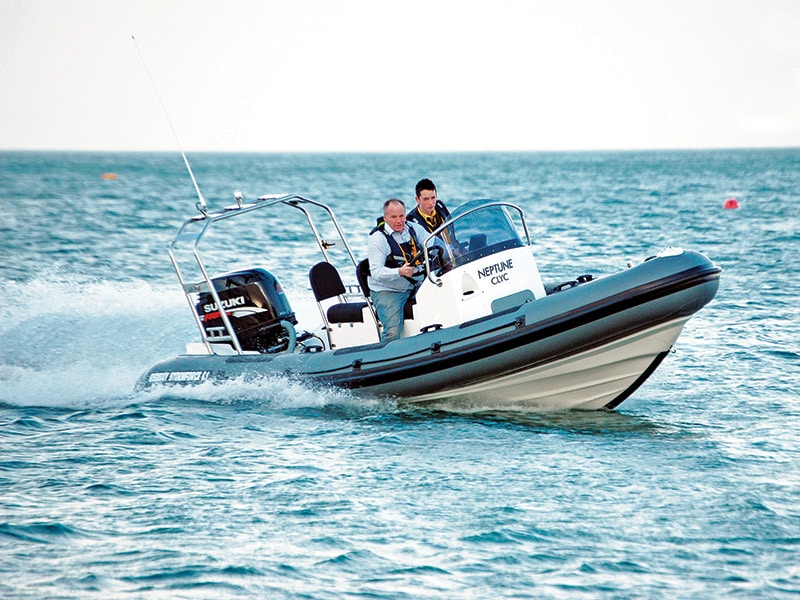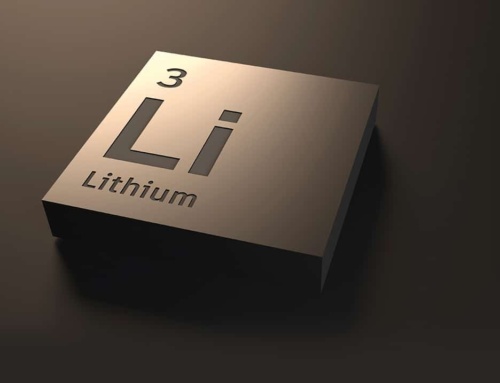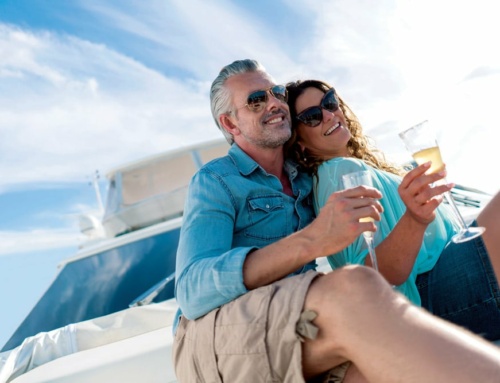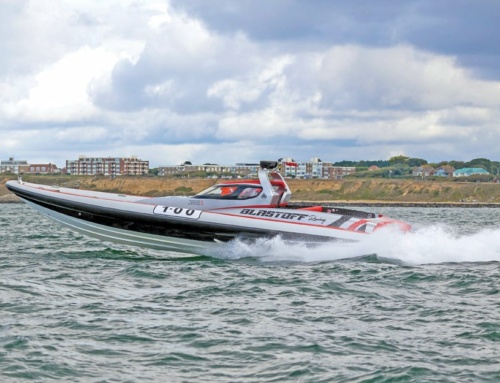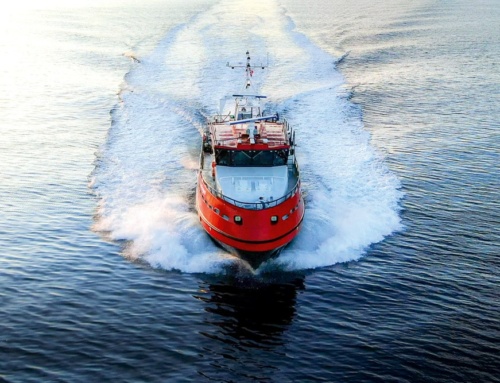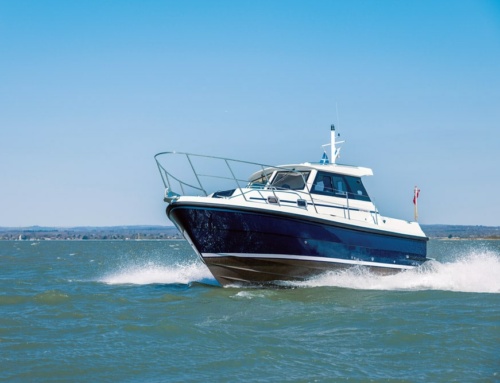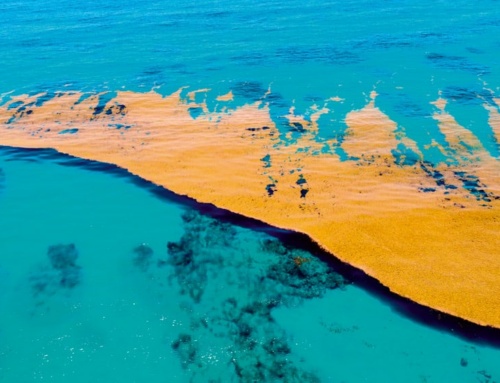- Redbay Boats will always remain a family business.
- … we have no plans to mass-produce boats; my preference is to build bespoke boats for a select clientele.
- I love my job so much because it was a hobby that turned into my career.
- I enjoy the challenge of designing bespoke boats and meeting all our customers/friends.
In an exclusive interview with PBR, Tom McLaughlin talks to Hugo Montgomery-Swan about the business he and his family founded and still continue to run after four decades.
The story of Redbay Boats is one of remarkable success. It is the story of a company that, from humble beginnings, has grown to be one of the most successful RIB builders of its type in the British Isles, delivering a breed of craft that has become acknowledged internationally for its outstanding all-weather capability. It was a privilege, therefore, to talk to co-founder and -owner, Tom McLaughlin …
Tell us about your family’s background and history with the sea …
Our family house in Cushendall was at the top of a slipway and I can remember pulling lobster pots at the age of eight with my mother. My father had a 35ft ex-Navy Pinnacle, which was sold and replaced with a Tremlette Seashell, followed by a Fairey Huntress 23, a Fairey Swordsman 33, a Moreland 38 and then a Nelson 42. I began sailing at the age of 12 in a Heron sailing dinghy, and then a Flying Dutchman, and now I sail a Dart 20. In the early days there were regular trips to Rathlin and the Scottish Islands. My father was a coastguard auxiliary, and before the lifeboat was established in Cushendall, the Fairey Swordsman was used for rescues. My uncle owned two salmon fisheries on the other side of the bay, and as children it was a treat to be allowed to look at the nets in the evening with the old fishermen. In later years, during the school holidays, I fished with a salmon draught net in Cushendun Bay for three years. In the early days of Redbay Boats we supplemented our income by fishing lobster pots and repairing nets.
At what point did you take up the reins at Redbay and begin establishing the direction the company is known for today?
I established Redbay Boats in 1977 at the age of 18. It started out as a partnership with a friend who was a joiner. The plan was to build wooden clinker-built boats. Unfortunately, my friend passed away just as we had secured woodworking machinery and premises. I was faced with the decision of either to go back to school or learn how to build a boat, so with a book called Clinker Boatbuilding by John Leather and the help of a few friends, I set about producing the first boat, a 13-footer with 1,300 copper rivets all put in by hand. Redbay No. 1, which I now have, was launched in November 1977 and was bought by a local man for leisure use. Over the next 18 months, a further 10 wooden boats from 13 to 22 ft were produced and sold, mainly to commercial fishermen. We were always up against the fibreglass fishing boats like Orkney and Dell Quay. So we set about making moulds for our own range of 16 to 21 ft fast fishing boats, known as Redbay Fastfishers. These boats quickly developed a big following of commercial fishermen and serious leisure anglers. We even sent one as far away as the Falkland Islands. We then set about developing our own range of speedboats in two sizes, known as the Ski-sport 136 and Ski-sport 166. These proved to be exceptional seafaring boats and many trips were undertaken to Scotland. At about this time, RIBs were becoming popular, and it was obvious to us that if we wanted to make regular trips across the North Channel, we needed a RIB, so we modified the speedboat and this became the basis for our Stormforce RIBs.
How has your life as a professional seaman and lifeboatman influenced your boatbuilding?
I have been involved with the lifeboat in Cushendall since it was established in 1972, serving as helm on the D-Class Atlantic 21 and now as one of the coxes on the Trent class. As a crewmember, you learn to totally respect the sea, to read the water and to put the safety of the crew first. Our location on the north coast exposes us to some of the worst sea states and tides around Ireland. Rathlin Sound is not the place you want to be in bad conditions, but our lifeboat training has taught us how to deal with it. I also have another pressure as I don’t want to be towing in any of our own boats!
What have been some of the greatest challenges to establishing the Redbay brand and business?
The biggest challenge in the early days was simply establishing the Redbay name. We had earned respect from commercial fishermen with our wooden boats; we now had to convince them that our GRP boats were just as good. We could raise interest before by getting a few high-profile fishermen on board. With our RIBs we had to start from scratch, so our first 6.1 was rigged as a race boat. It was fitted with twin 65hp Suzukis and entered in the 1993 Scottish RIB Challenge. We won three of the offshore legs in rough conditions, and only a fuel issue in the last leg robbed us of being outright winners. We had massive interest in our boats after this and we quickly developed a range of cruising RIBs with canopies and cabins so that we could cruise to Scotland, as it is only 16 miles away for visits and even Sunday lunch and back. I am proud to say that new people equate Redbay Stormforce with rough weather.
Looking back with experience and hindsight, is there anything you wish you had done differently?
Looking back, I must say there is really nothing I would do differently now. I enjoy going to work each day and I enjoy the challenges of designing bespoke boats and trying to meeting everyone’s expectations. And you get to spend time on the water most days!
What achievements as a company are you most proud of?
The achievements we are most proud of are the seakeeping abilities of our boats and the relationships that we have with our customers, who become our friends. We take great pride in every boat we build and great pleasure in seeing them being used for their intended purpose, whether commercial or leisure.
Tell us which Redbay models down through the years remain your standout favourites and why …
It’s hard to say which models stand out as favourites. In the early days the 6.1 was in a league of its own, then the 11m came along, firstly with canopies and then with a fully enclosed cabin. The 7.4 is always a top seller. In truth, I would take any of our models to sea on a bad day.
Describe some of the most exciting design initiatives you’re implementing at this time …
The most exciting designs we are working on now are the development of our 16m cruising version, our new 1250 cabin boat and a new 12m jet boat. We have just opened our new workshop with overhead cranes, and this allows us to fit out the hull interiors before we bond the tops. We are also developing a range of 850 to 1050 cruising boats with berths.
Why do you love your job as much as you do?
I love my job so much because it was a hobby that turned into my career. I enjoy the challenge of designing bespoke boats and meeting all our customers/friends.
From where and what do you gain your inspiration?
My inspiration comes from the fact that I have created a fantastic boatbuilding business in my home village of Cushendall, all from my hobby. This encourages visitors and trade to Cushendall for work. We have the most fantastic views of the Glens of Antrim and I am delighted to be working and living here – our quality of life is something special.
Where do you see Redbay in 10 years’ time?
Going forward, we have no plans to mass-produce boats; my preference is to build bespoke boats for a select clientele. We will not build longer than 16 metres and will refine our range over the next few years. We will encourage our customers to cruise the Scottish Islands and we may put a 16m boat together for week-long charters in Scotland.
Is it your wish for Redbay to remain a family business?
Redbay Boats will always remain a family business. One of my sons, Conor , is as involved as myself and at the forefront of the development of the business. We will build approximately 30 to 40 boats a year and continue to work with both commercial and leisure customers as family traders.

